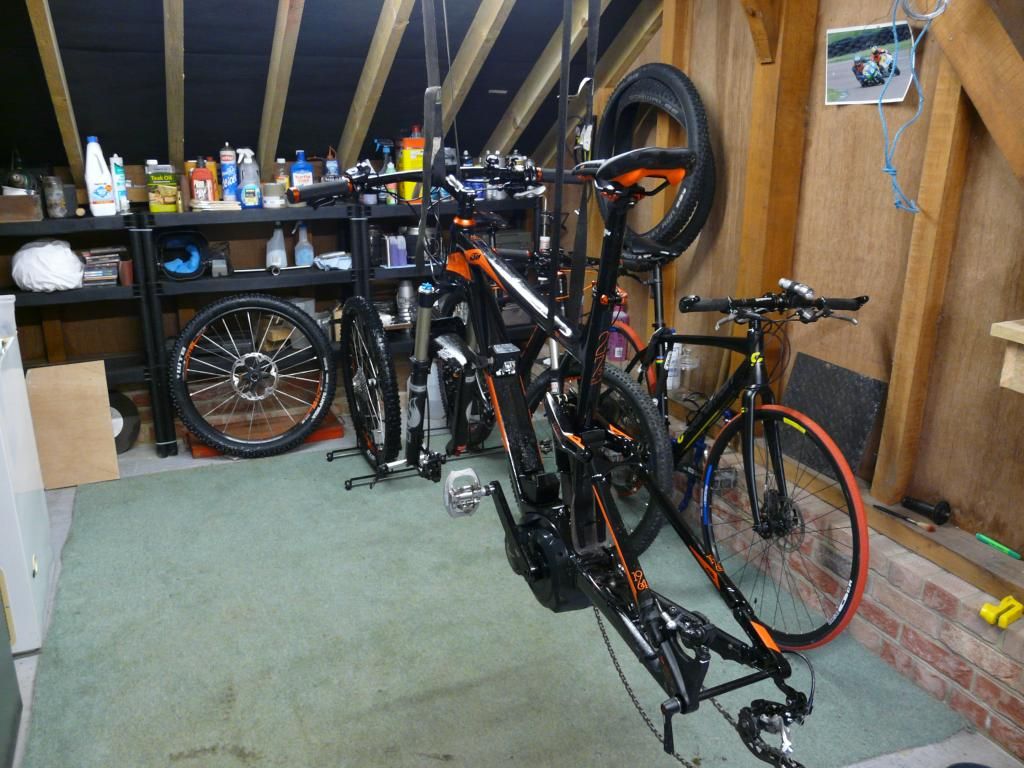Currently 28 views, with no replies.

Bigclick, the first thing that you need to do is get the bike dirty!

After a ride, I never ever leave the cleaning until the next day, even if I'm dirtier and wetter than the bike, and it's late at night.
Assuming that you have access to a hose pipe or portable 12volt washer, quickly rinse off any large lumps of mud etc, avoiding bearing areas, battery area and console area.
After this I quickly use an airline to blast the chain free of water, then apply a degreaser to the chain. As this is taking action, I apply muckoff or similar, and gentle agitate it in.
Once both have been left to do their thing, I then hose down the whole bike, once again avoiding bearings, battery area and console. I never direct water into the cassette, I lean the bike over to the right (not onto the derailleur) Then wash the rear cassette that way.
After the above, I thoroughly go over the whole bike with an airline to remove as much water as possible, then I spray the whole bike with duck oil, avoiding brakes and cassette, and once again blast the whole bike with an airline.
Never apply wd40,duck oil, gt85 etc to bearing areas and rear cassette. The reason being is that you will eventually wash the grease out. So don't do it!
I then suspend the bike as below.
Once suspended, I remove the wheels, brake pads, saddle, battery and console.
I then re wash the wheels, paying great attention to the discs. Removing the wheels, also gives me a chance to check for any damage and loose spokes.
It bugs the crap out of me when people say that they have cleaned their bike, then upon inspection they haven't cleaned under the saddle. That is my reason for removing it, as I can then wash and clean it properly. I also apply anti seize spray to the seat post.
Next up is brakes. I thoroughly clean the calipers with the pads removed, and also thoroughly clean and check the brake pads, for damage and wear.
I use kimwipe to clean the battery and console area, and then once again spray the whole bike with duck oil, then wipe everything down again.
I pay particular attention to the rear derailleur, jockey wheels and front sprocket. Make sure that each is spotless.
Next up is suspension. Make sure the dust seals are clean and intact, remove any water or grime, and check sliders.
Once I am happy with everything, I replace the brake pads. On your bike, the pads are left and right handed, as is the retaining spring.
Before installing the wheels, I check the tyres once again, looking for thorns etc.
Lastly I lubricate the chain, and apply ACF50 to any exposed metal parts, and also go up and down through the gears, and check brake action, and stering.
Stubborn marks can be removed with car insect and tar remover, and it's worth buying a bag of lint free rags. You can buy these by the sack load online. Just look for bag of rags.
Other than just checking that everything is sound and secure, there isn't really much else to do.
I then move onto my spd shoes, and ensure that the cleats are cleaned out and spotless.
I have also today bought a replacement KMC X10.93 chain, so that I can run two chains. One on the bike, and one being cleaned.
I guess that I can take a completely dirty bike, and get it back to looking pristine in about half an hour. It's half an hour very spent and could save loads of money and hassle. Whilst I carry out light maintenance work to my bikes, for serious maintenance work I use a local lad, who in my opinion, is the best that there is. He has both the tools and knowledge that I don't have. I'd like to change this over time, and more specifically in relation to the electrical aspect of things, and I'm currently tempted to see if I could go on Bosch training days. Even if I can't solve an issue, I like to know how things work.
 )
)



